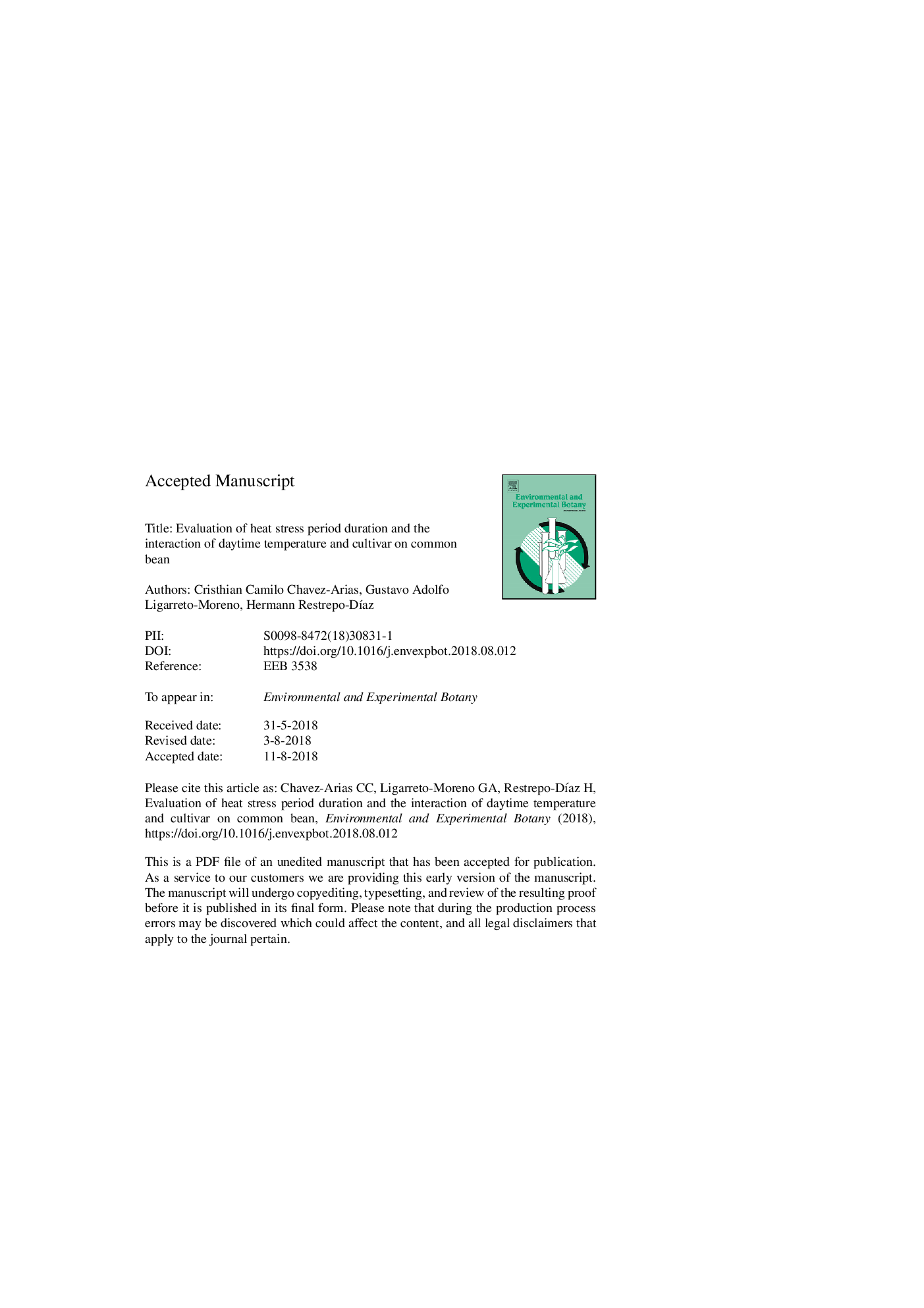| Article ID | Journal | Published Year | Pages | File Type |
|---|---|---|---|---|
| 8886913 | Environmental and Experimental Botany | 2018 | 29 Pages |
Abstract
Two separated experiments were conducted to study the effect of various exposure periods of heat stress and the interaction of four common bean cultivars at different daytime temperatures. In the first experiment, 'Cerinza' plants were subjected to four periods (0, 5, 10, 20 d) at 40âC. In the second experiment, 4 cultivars of common bean ('Cerinza', 'Bachue', 'Bacata' and 'Bianca') were exposed to four different temperatures for 20 d. The results from the first experiment showed that the photosynthesis rate decreased by â94% (16.2 vs. 1.1âmâ2 s-1, respectively), while proline content increased by â100% (22 vs. 44âμmolâg-1FW) in 'Cerinza' plants exposed to high temperature for 20 d compared to control plants. In the second experiment, photosynthesis and leaf photosynthetic pigments (chlorophyll and carotenoids) also diminished (â45% and â40%, respectively) when the daytime temperature changed from 25 to 40âC in all cultivars. Proline and malondialdehyde were enhanced at 40âC, mainly, in 'Cerinza', 'Bachue', and 'Bacata'. 'Bianca' plants registered a high-stress susceptibility index and low-stress tolerance index scores at 30, 35 and 40â°C. Based on these results, 'Cerinza', 'Bacata' and 'Bachue' cultivars can be considered moderately tolerant to long periods of heat stress and could adapt well to periods of high daytime temperatures in Andean areas.
Keywords
Related Topics
Life Sciences
Agricultural and Biological Sciences
Ecology, Evolution, Behavior and Systematics
Authors
Cristhian Camilo Chavez-Arias, Gustavo Adolfo Ligarreto-Moreno, Hermann Restrepo-DÃaz,
